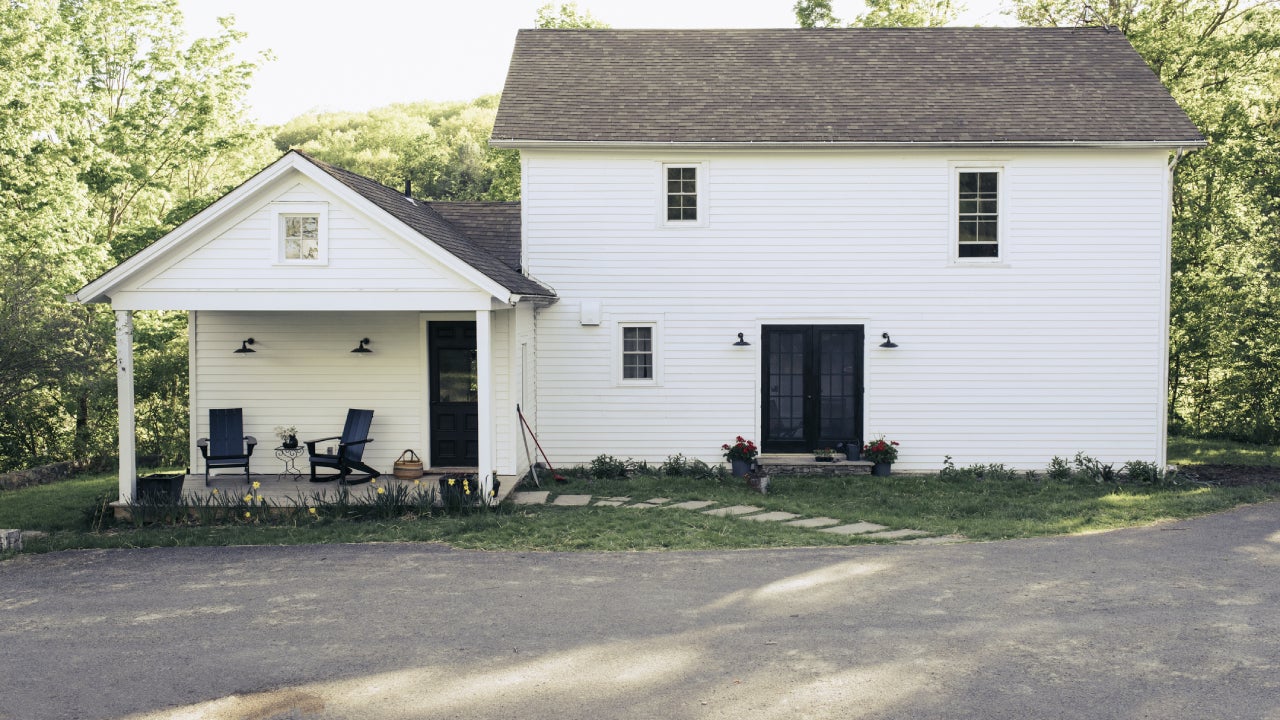The Good Brigade/Getty Images
Unless you are an insurance agent, you may not know that there are multiple types of home insurance. The most common is the HO-3, with “HO” standing for homeowner. There are seven other policy types that insure a range of potential home types: rental units, condos and mobile homes, for example. If you have an older or historic home, you may have HO-8 insurance. This type of policy is meant for homes with older systems, such as plumbing and electrical, or homes of historical interest, such as those on the National Register of Historic Places. Because older homes are more likely to need extensive repairs in the near future, insurers typically won’t cover them under a standard policy.
What is an HO-8 policy?
An HO-8 policy is often referred to as a modified coverage form. HO-8 insurance has a unique aspect — the repair/replacement cost may be higher than the home’s resale value. Older or historical homes and those listed as registered landmarks often fit the bill as they may cost more to rebuild to a pre-loss condition than a typical modern home. They may not have been updated over time and could potentially be out of code (based on modern standards). As a result, they may not qualify for a more standard homeowners insurance policy.
When you buy HO-8 insurance coverage, your home is covered for named perils, which means unless the specific peril that causes the loss is listed in your policy, there is no coverage if the home is damaged. Claims are typically paid on an actual cash value basis, which takes depreciation and wear and tear into account when determining monetary damages. If you are considering an HO-8 home insurance policy, working with a licensed insurance agent could help you get the proper coverage and understand the limitations your policy may have if you file a claim.
What does HO-8 insurance cover?
An HO-8 insurance policy covers fewer named perils than a standard HO-3 policy. HO-8 insurance policies typically cover a specific subset of homes that may not be able to get coverage under other policy forms.
Homes older than 40 years
An HO-8 policy may cover dwellings that are 40 years or older. Age is not the only determining factor though, so just because your home is older doesn’t mean it’ll automatically disqualify for coverage under an HO-3 policy. However, older homes may not qualify for a standard HO-3 because of issues such as outdated plumbing materials or old electrical wiring. Outdated wiring may need a major update to reduce the risk of fire and can therefore push the house out of qualifying for a standard homeowners policy.
Historical homes
If you own a historical home, such as one listed in the National Register of Historic Places, an HO-8 may be the best option for home insurance. Historic homes and homes that are denoted as registered landmarks are usually more expensive to repair and/or rebuild. Many historical districts set limits to what types of building materials can be used to keep the area original. Costs may be higher because more expensive specialized laborers may have to do the work using potentially pricier building materials.
10 Named perils
An HO-8 policy names 10 specific perils. If the cause of loss is a peril listed in the policy, then coverage applies. If the cause of loss is not included, then no coverage applies. Conversely, a standard HO-3 policy covers the dwelling and other structures on an open-peril basis. This means that all perils are covered unless the cause of loss is specifically listed as an exclusion in the policy. HO-8 insurance will typically cover losses caused by:
- Aircraft
- Civil unrest/riots
- Explosions
- Fire or lightning
- Hailstorms and windstorms
- Smoke
- Theft
- Vandalism/malicious mischief
- Vehicles
- Volcanic eruptions
What does HO-8 insurance not cover?
As mentioned, an HO-8 policy only covers 10 perils, compared to the open-perils coverage provided by a standard HO-3 policy. Some examples of perils that would not be covered on an HO-8 insurance policy include:
- Falling objects
- Weight of snow, ice or sleet
- Power surges or short circuiting
- Freezing pipes
- Water damage caused by heating, air conditioning or plumbing overflow or failure
- Sudden cracking or tearing of home appliances (plumbing, heating, etc.)
Earthquakes
Earthquakes and seismic activity are not typically covered under an HO-8 or standard HO-3 policy. However, depending on your state, the insurance company and the homeowners policy type, you may be able to add a coverage endorsement or purchase a separate earthquake insurance policy.
Flooding
Like an HO-3 policy, HO-8 policies do not cover damage from flooding. Depending on where you live and your insurance company, you may be able to buy a flood insurance policy through the National Flood Insurance Program (NFIP) or a private insurer. Given that floods can lead to mold and structural damage, it’s important to make sure you’re covered for this peril.
Falling objects
If any object falls on your home, damaging the house or other structures on your property, it would be covered by a standard HO-3 policy. Unfortunately, HO-8 coverage doesn’t include falling objects. While this type of damage may seem rare, high winds can cause branches and other debris to damage your roof. You would have to pay for these repairs out of pocket.
Water damage
A standard HO-3 policy will typically include some water damage coverage, but usually excludes damage from flooding or sewer backup. An HO-8 policy does not include coverage for water damage, including damage caused by sudden events such as burst pipes.
Is an HO-8 policy right for me?
As a modified policy form with named peril coverage, an HO-8 policy may not be the preferable option, especially if you could qualify for an HO-3 or HO-5 policy. Sometimes an HO-8 policy may be the only available option if you live in a home that is over 40 years old with older heating, plumbing and electrical systems. This may also include homes that are registered landmarks or historic homes with restoration requirements or code violations that may disqualify them from a standard homeowners insurance policy.
If you have been denied standard homeowners insurance coverage for reasons such as having an older home with outdated fixtures or appliances, companies that offer HO-8 insurance policies may be able to provide coverage. A person considering an HO-8 policy should be aware of the homeowners perils covered and not covered under the policy form. Working with a licensed insurance agent may help you determine which homeowners policy type is best for your home’s characteristics and insurance needs.
Frequently asked questions
-
-
The difference between HO-8 and HO-3 insurance policy types is the way in which perils are covered. In an HO-8 policy, there is only coverage for 10 named perils, while an HO-3 policy provides coverage for all perils except listed exclusions. An HO-8 policy also covers claims on the dwelling and personal property on an actual cash value basis, whereas an HO-3 typically covers the dwelling and other structures with replacement cost coverage while personal property has the option to be covered on either a replacement cost or actual cash value basis.
-
The HO in HO-8 stands for homeowner, and the number distinguishes this type of policy from other forms of home insurance. HO-8 policies are specifically designed for older homes that have outdated construction or features that may disqualify the property from standard homeowners insurance. Not all older homes need HO-8 insurance, but many historic homes with old plumbing and wiring will only qualify for this type of coverage. The 10 covered perils under HO-8 insurance include fire, smoke and theft.
-
The type of home insurance you need for a historical home will likely depend on where it is located and the type of coverage you desire. If your home is historical and listed in the National Register of Historic Places, an HO-8 policy may be the best type of policy to provide adequate coverage. By speaking with a licensed insurance agent and gathering quotes from a few companies, you may be able to compare options to find the best policy for your needs.
-
There is not a standard cost for HO-8 policies. Instead, your premium is specific to your situation and will be based on a range of factors, including your home’s age, where it is located and your own claims history. To find the most affordable insurance for your older house, it may help to ask for quotes from several companies to see which might give you the lowest rate. Maintaining your home and avoiding unnecessary small claims may also help keep your rates low over time.
-
Read the full article here
 Trending:
Trending:















